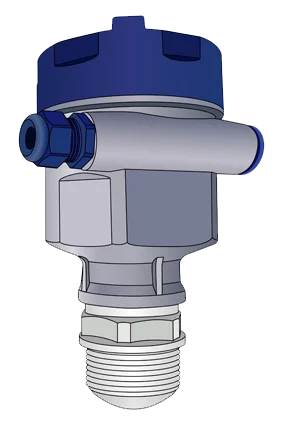Is It Time To Switch To The New 80G Radar Tank Level Sensor?

Radar level sensors can be used to monitor the level of liquids and solids in tanks and other containers. One of the key differences between older radar level sensors that functioned at 26GHz and newer sensors that operate at 80GHz is the frequency of operation. Technology has advanced over time.
The older 26GHz radar level sensors operate at a lower frequency, which is 26GHz, as compared to the contemporary 80GHz radar level sensors. Because the 26GHz sensors operate at a lower frequency, the resulting longer wavelength allows them to see past blockages in the tank such as dust, mist, and other contaminants. The larger wavelength, however, makes the signal more susceptible to interference from other sources, such as metal or other radar signals. This can have a negative impact on measurement accuracy.
Radar level sensors that operate at 80GHz, on the other hand, operate at a higher frequency than sensors that operate at 26GHz. The signal has a shorter wavelength due to the increased frequency, making it more difficult to travel through the mist, dust, and other obstructions in the tank. Because the signal is less susceptible to interference from other sources as a result of the shorter wavelength, measurement precision can be enhanced.
Another distinction between older radar level sensors and modern ones is the beam width. Because the beam width of 26GHz radar level sensors is frequently wider, measurement errors may occur due to reflections from the tank’s sidewalls. Radar level sensors operating at 80 GHz, on the other hand, frequently have narrower beam widths. This reduces the effect of reflections and improves measurement accuracy.
Furthermore, radar level sensors that operate at 80 GHz have a better resolution and are more precise in measuring. This is important for applications requiring great accuracy as well as detecting materials that are either tiny or have a low dielectric constant.
Finally, the fundamental variation between earlier radar level sensors that operate at 26GHz and modern ones that work at 80GHz is the frequency of operation. When compared to its predecessors running at 26GHz, radar level sensors working at 80GHz provide improved precision, lower susceptibility to interference, and higher resolution. The 80GHz sensors, on the other hand, have a reduced ability to penetrate the tank’s barriers, such as dust, mist, and other contaminants. The exact nature of the application and the environment in which the sensor will function will determine the choice of the right technological solution.


